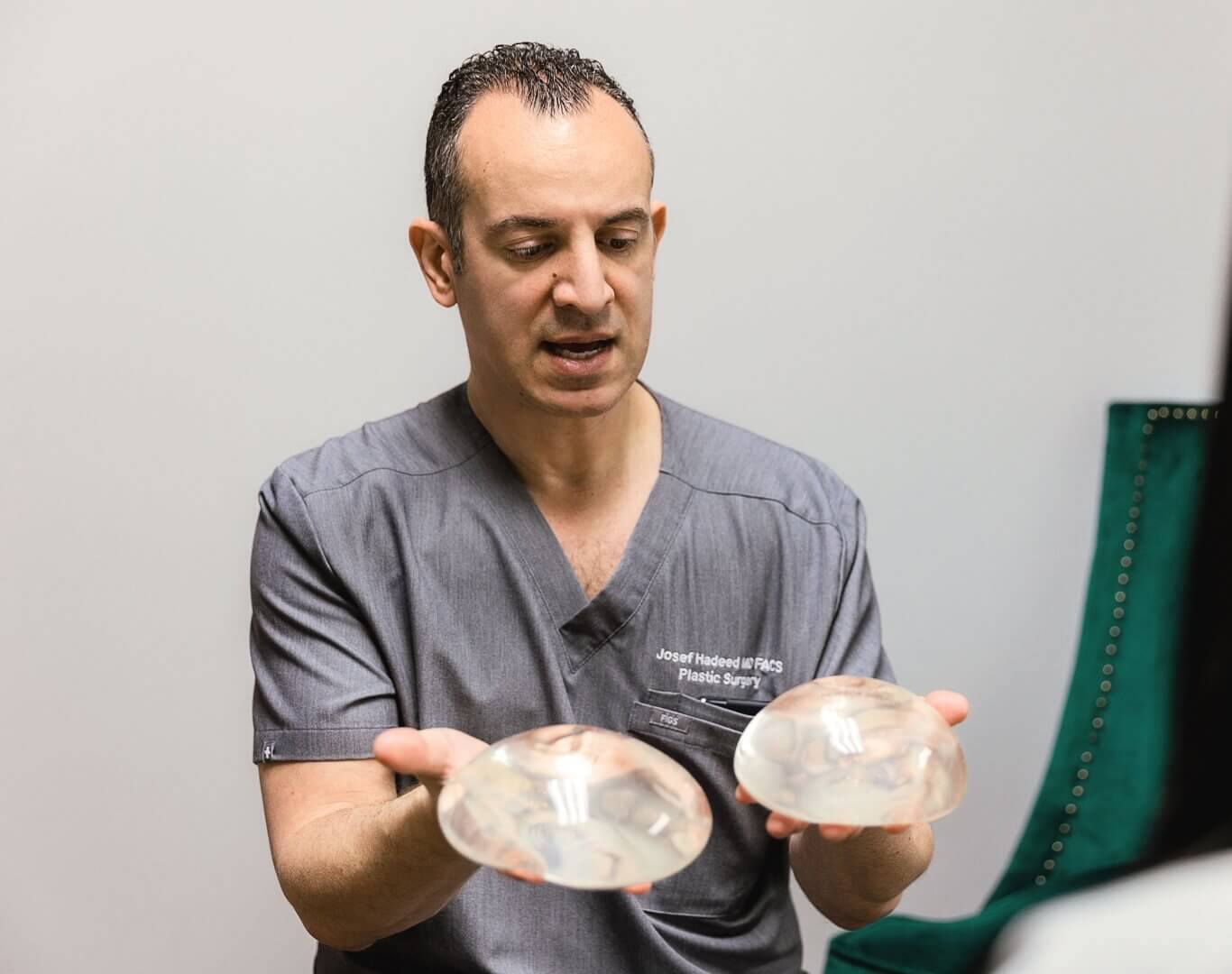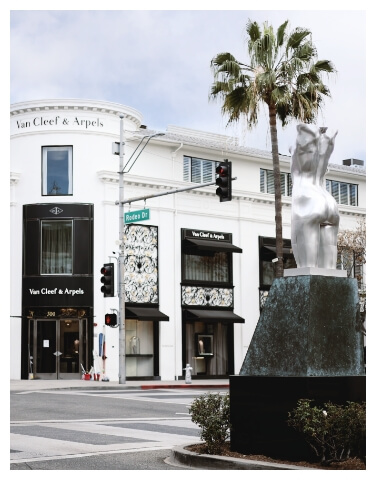As the number of women undergoing breast augmentation surgery continues to rise, so does the need to revise their implants. The reasons for this are as diverse as the original desires for enlargement. Over time, a woman’s body can experience certain changes, such as weight fluctuations or pregnancy, that can cause her to decide her augmented breasts have become unflattering. Other times, medical complications like implant rupture or capsular contracture can develop after the initial breast enhancement procedure and distort the breasts. Breast revision is a surgical procedure that can correct and resolve these issues to restore the breasts to a more aesthetically pleasing appearance.
What Is Breast Revision Surgery?
Breast revision surgery is a procedure that can be performed for a variety of reasons. It is known by several names, including secondary breast augmentation, implant explant, or explant surgery. Breast implant revision surgery typically involves removing the existing implant and exchanging it for a new one or restoring your breasts to their natural size.
While the majority of breast augmentation surgeries provide excellent results, there are chances that complications may develop following breast augmentation that require treatment. You may choose breast revision because you need an implant replaced due to damage or age, breast implant complications, or unsatisfactory results that require corrective breast surgery. You may also decide to add a breast lift to your revision breast augmentation or change the size, shape, or style of your implant. There are several breast implant revision options available, so whatever you decide, breast implant revision is an excellent way to ensure that you have the beautiful breast profile you desire.
Reasons For Breast Revision Surgery
Age of Your Breast Implants
Breast implants are designed to last between ten and twenty years, so they will likely need to be replaced at least once during your lifetime. For breast implant exchange, breast revision surgery is necessary.
Capsular Contracture
Capsular contracture is the most common complication after breast implant surgery. It is caused by scar tissue constricting the implant, which can make the implant hard to the touch and noticeably misshapen, as well as pain or discomfort. The only capsular contracture treatment is breast revision surgery.
Breast Implant Rupture
While breast implants are made to be durable and lasting, they can experience ruptures. If a saline implant ruptures, it is immediately noticeable, as your breast will deflate. Silicone implant ruptures are more challenging to distinguish, so periodic MRIs are recommended to ensure your silicone implant is fully intact. If you require breast implant replacement due to implant failure, breast revision surgery is necessary.
Implant Malposition
Sometimes, breast implants are the wrong size for your anatomy, are placed incorrectly, or shift after placement. They may sit too high on the chest or too low (known as “bottoming out”). Implants may also shift to the sides of your body (lateral malposition) or too close together in the center of your chest, creating a “uni-boob” (known as symmastia). Corrective breast implant surgery can remedy these issues and create the breast profile you were meant to have.
Lifestyle Changes
Some women who have undergone breast augmentation may be unhappy with their results. Some women may decide to get breast revision because their lifestyle or aesthetic has changed. They may decide they want smaller breast implants so they can participate more freely in athletic activities. Some may wish to change the type of implant they have or remove them altogether. Breast revision surgery can modify the size, shape, and placement of your breast implants to meet your cosmetic expectations.
Aesthetic Concerns
Patients whose breast implants have changed due to pregnancy, weight loss, breastfeeding, or aging may feel embarrassed about the way they look. Breast revision surgery can not only reconstruct your breasts, but it can also improve your confidence and overall appearance.
Breast Implant Illness
Breast implant illness (BII) is a term used to describe a series of symptoms that affect some people with breast implants. It isn’t a medical diagnosis but is thought to be caused by an autoimmune or inflammatory response to the implants. Symptoms of breast implant illness include:
- Joint pain
- Muscle pain and weakness
- Chronic fatigue
- Recurrent pain
- Trouble concentrating, memory issues, or brain fog
- Breathing issues
- Anxiety and depression
- Headaches
- Hair loss or skin rashes
- Dry eyes and mouth
More research is needed to determine the cause of BII, and it should be noted that it can happen at any time after you undergo breast augmentation, from immediately after to several years down the road. The only way to treat BII is breast implant removal.
Dr. Hadeed understands the unique challenges involved with breast revision surgery and utilizes advanced techniques to minimize future complications. During your consultation, he will carefully listen to your questions and concerns to formulate a surgical plan based on your individual needs and aesthetic goals.
Schedule A ConsultationHow Is A Breast Revision Performed?
Initial Consultation
Dr. Hadeed understands the unique challenges involved with breast revision surgery and utilizes advanced techniques to minimize future complications. During your consultation, he will carefully listen to your questions and concerns to formulate a surgical plan tailored to your individual needs and aesthetic goals. After thoroughly assessing your condition and understanding your goals, he will determine the best surgical method to achieve your desired results.
Your consultation is the ideal time to ask any questions or address any concerns you may have. You may talk with Dr. Hadeed about his experience and training and ask to see breast implant revision before-and-after photos from his previous patients.
The Breast Revision Procedure
Breast revision surgery is performed on an outpatient basis using general anesthesia. Dr. Hadeed will begin the surgery by removing the existing breast implants. He will then use the predetermined technique necessary to make revisions to your breasts, which may include:
- Removal of scar tissue
- Adjusting or refining the implant pocket
- Repositioning of an implant
- Replacing an implant with a new implant
- Placement of a biological scaffold to support the implant
- Fat transfer to add volume or shape to the breasts
- Repositioning of natural breast tissue
Once Dr. Hadeed has made the appropriate revisions, he will complete the surgery by carefully closing the incisions and applying sterile dressings over the surgical areas.

See many examples of real patients before & after results
What Can I Expect During My Breast Revision Recovery?
Breast implant revision recovery is similar to recovery from your initial breast augmentation. After the procedure, a surgical bra will be provided to help minimize swelling and support your new breasts as they heal. Surgical drains may also be placed to collect any excess blood or bodily fluids. Dr. Hadeed will likely remove the drains at your first postoperative appointment.
You will need to take one to two weeks off work to recover and refrain from most activities during this time. After your initial healing period, most patients can return to work and their daily routine. Keep in mind that if you add other cosmetic procedures to your breast revision surgery, your recovery timeline may be different.
You will experience some discomfort after the procedure, but this is temporary and easily managed with prescription or over-the-counter pain medication. Swelling and bruising are common side effects, but will eventually go down on their own. Wearing your compression garment and elevating your upper body will also help alleviate swelling.
Taking short, slow walks several times during the day as you recover is essential, as it can help prevent blood clots and encourage blood circulation, speeding up healing. You should be able to slowly return to light exercise over the course of three to four weeks but should not perform any movements that engage or strain your chest muscles. You must avoid heavy lifting and strenuous activities for about six weeks or until Dr. Hadeed clears you.
When Will I See My Breast Revision Results?
Some of your breast revision results will be visible immediately after surgery. Swelling will obscure much of your results but will dissipate over time. If you simply replace your implants, your results will progress similarly to the way they did after your initial breast augmentation. Most of the swelling will resolve in about four to six weeks but may persist in small amounts for up to a year.
After your breast revision surgery, you can expect long-lasting results that will restore your breasts to a beautiful and natural appearance.
How Much Does a Breast Revision Cost in Beverly Hills, CA?
Breast implant revision costs in Beverly Hills, CA, are dependent on many factors, including anesthesia fees, surgical fees, and the techniques used, as well as if you decide to combine other procedures with your revision surgery. Dr. Hadeed will provide you with a cost sheet reflecting the price of your unique surgery during your consultation. Financing is also available.
Frequently Asked Questions About Breast Revision
Am I a candidate for breast revision surgery?
Ideal candidates for breast revision surgery should be in good health, nonsmokers, and have realistic expectations about their results. Good candidates for breast revision surgery also wish to address issues related to the appearance of their breasts, pain due to implants, or because of damaged implants.
Will a breast revision leave scars?
A breast revision does leave scars, and the degree of scarring will depend on the techniques used during your procedure. Any breast implant revision scars that develop can be hidden underneath clothing and will likely fade over time. However, Dr. Hadeed will try to use the incision spots from your initial breast augmentation whenever possible to avoid creating additional scars. If you choose to add a breast lift to your revision surgery, you will have additional scars as needed for the lift procedure.
While your breast revision scars will fade over time, you can accelerate the process by using scar gels and silicone strips to help diminish their appearance. You should also protect your incisions and scars from the sun to reduce their visibility.
Is breast revision painful?
You may experience moderate pain following your breast revision surgery. However, the level of discomfort often depends on the intricacy of the procedure. Someone who had their implants replaced will likely have less pain than someone who needed treatment for capsular contracture or implant displacement, as those require more tissue manipulation. No matter what type of breast revision procedure you undergo, Dr. Hadeed will prescribe medication to minimize any postoperative discomfort and ensure a safe and comfortable recovery.
How can I prepare for my breast revision surgery?
When you schedule your breast revision surgery, Dr. Hadeed will let you know the best way to prepare. You will need to stop using nicotine of any type (including smoking and vaping) for at least two weeks before and after your surgery, as nicotine can cause issues with anesthesia and slow down the healing process. You may also need to stop taking blood-thinning prescriptions, supplements, or over-the-counter medications.
Before your breast revision surgery, it’s a good idea to prepare your recovery area at home. Because your initial movement will be limited, you should have everything you need near your recovery area, including water, prescription and over-the-counter pain medication, phone chargers and other electronics, and snacks. You will also want to have pillows and blankets available to help keep your upper body elevated to minimize swelling.
Breast revision surgery is performed using general anesthesia, so you will need a responsible adult to drive you home after your procedure and help you during the first 24–48 hours after surgery.
Are there any risks involved with breast revision surgery?
As with any surgical procedure, there are certain risks involved with breast revision surgery, which may include:
- Anesthesia risks
- Bleeding
- Infection
- Fluid accumulation
- Loss of nipple sensation
- Changes in skin sensation
- Poor wound healing
Following Dr. Hadeed’s postoperative instructions will help ensure a safe recovery free of complications. However, if you are concerned about the way you’re healing after surgery, be sure to contact his office immediately.


Beverly Hills, California
9454 Wilshire Blvd
Suite 710
Beverly Hills, CA 90212

